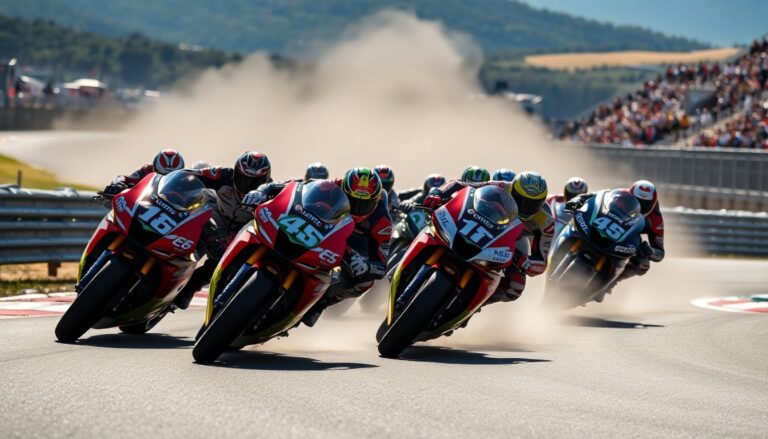Argomenti trattati
The MotoGP championship is one of the most prestigious motorcycle racing events globally, captivating fans with its blend of speed, skill, and strategy. Each season, top riders from around the world compete on some of the most challenging tracks, showcasing their riding abilities alongside the cutting-edge technology that defines modern motorcycle racing.
MotoGP transcends mere racing; it is a cultural phenomenon that unites millions of enthusiasts. From the roaring engines to breathtaking overtakes, every aspect of the sport is designed to thrill. This article explores the intricacies of MotoGP, delving into its rich history, the technology powering the bikes, and the riders who transform each event into a spectacle.
A brief history of MotoGP
The origins of MotoGP date back to the 1949 season when the first world championship was established. Initially known as the FIM Road Racing World Championship Grand Prix, it featured various classes of motorcycle racing. The premier class, now recognized as MotoGP, was introduced in 2002, bringing together the fastest bikes and the most skilled riders.
Over the decades, MotoGP has evolved significantly. Technological advancements have played a crucial role in shaping the sport, leading to lighter, faster, and more agile motorcycles. Today’s MotoGP bikes are masterpieces of engineering, equipped with state-of-the-art components that enhance performance and safety.
The evolution of technology in MotoGP
One of the most exciting aspects of MotoGP is the continuous innovation in motorcycle technology. Manufacturers such as Yamaha, Honda, Ducati, and Suzuki invest heavily in research and development to gain a competitive edge. This has led to the introduction of features like traction control, anti-lock braking systems (ABS), and advanced aerodynamics.
For instance, the use of ride-by-wire technology allows for precise throttle control, enabling riders to manage power delivery more effectively. Additionally, the integration of data analytics during races provides teams with real-time insights, allowing them to make informed decisions that can change the course of a race.
The riders: athletes of unparalleled skill
MotoGP riders are not merely competitors; they are elite athletes who undergo rigorous training to maintain peak physical condition. The demands of racing require exceptional strength, stamina, and mental acuity. Riders must endure extreme physical stresses, including high speeds and intense g-forces during corners.
Some of the sport’s most iconic figures, such as Valentino Rossi, Marc Marquez, and Jorge Lorenzo, have become legends due to their remarkable skills and fierce competitiveness. Each rider brings a unique style to the track, showcasing their personality and strategic approach to racing.
The mental aspect of racing
Beyond physical prowess, the mental game plays a pivotal role in MotoGP. Riders must possess a keen sense of awareness, making split-second decisions while navigating through tight packs of competitors. The pressure of racing at high speeds can be overwhelming, and the ability to remain calm under stress is crucial.
Strategic thinking also comes into play. Knowing when to push the limits, when to conserve energy, and how to respond to competitors’ moves can mean the difference between victory and defeat. This combination of physical skill and mental strategy makes MotoGP racing compelling.
The global appeal of MotoGP
MotoGP transcends mere racing; it is a cultural phenomenon that unites millions of enthusiasts. From the roaring engines to breathtaking overtakes, every aspect of the sport is designed to thrill. This article explores the intricacies of MotoGP, delving into its rich history, the technology powering the bikes, and the riders who transform each event into a spectacle.0
MotoGP transcends mere racing; it is a cultural phenomenon that unites millions of enthusiasts. From the roaring engines to breathtaking overtakes, every aspect of the sport is designed to thrill. This article explores the intricacies of MotoGP, delving into its rich history, the technology powering the bikes, and the riders who transform each event into a spectacle.1
MotoGP transcends mere racing; it is a cultural phenomenon that unites millions of enthusiasts. From the roaring engines to breathtaking overtakes, every aspect of the sport is designed to thrill. This article explores the intricacies of MotoGP, delving into its rich history, the technology powering the bikes, and the riders who transform each event into a spectacle.2

